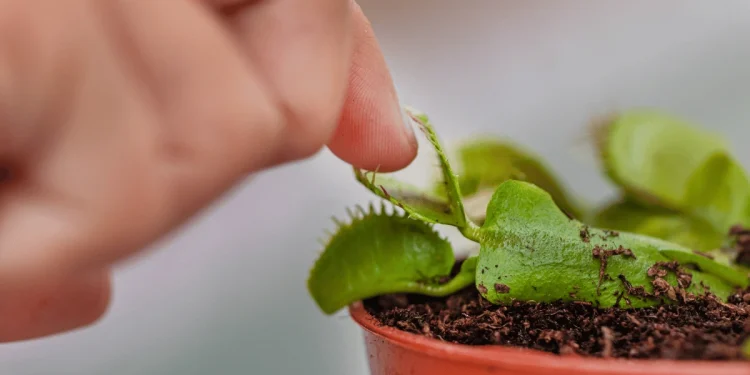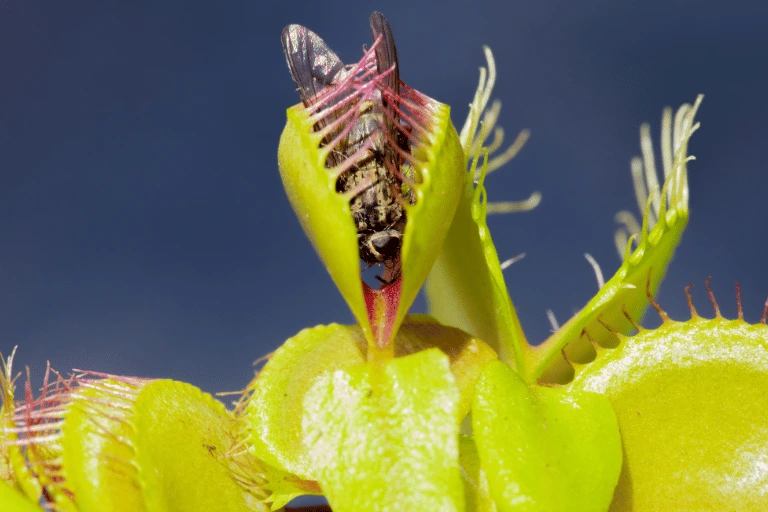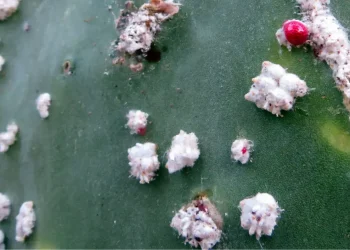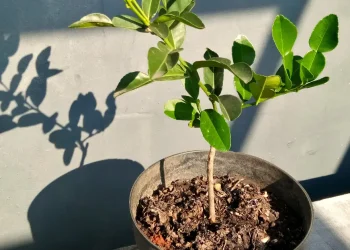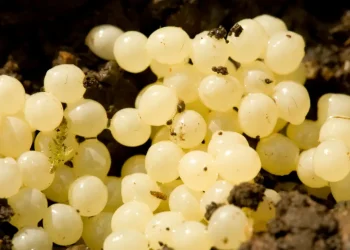As a kid, I was always scared but also fascinated by the Venus flytrap. The idea of a plant that could catch and eat insects seemed like from a sci-fi movie. But it kept me always wondering how big prey can be to be eaten by this carnivore plant. If Venus flytrap can perhaps eat a whole spider? Or if its diet consists mainly of flies or smaller insects like ants?
It turns out that the Venus flytrap eats a lot more than just flies, as the name might falsely suggest.
In this article, we’ll look at what all can be deceived to be eaten by Venus flytraps and see if their diet would be approved by a nutrition specialist. Spoiler alert: they can’t eat a human, you are safe.
How Venus Flytrap Captures its Prey?
We don’t usually see a plant move in real-time, as we can with carnivore plants. The whole mechanism seems strange, so I’m sure you were also wondering how the Venus flytrap catches its prey. How come its “mouth” closes when a fly or some other insect flies in.
Venus flytraps are unique to a wet savannas of North and South Carolina. The soil there is not exactly filled with nutrients, so they had to find a way to supplement their diet in order to survive. And over time, the Venus flytrap evolved specialized leaves with trigger hairs that would close around prey and prevent it from escaping.
When an insect or small creature comes into contact with these trigger hairs, the leaf snaps shut, trapping the prey inside. But it’s not just any contact that triggers the trap.
How do Venus Flytraps know when to Close?
Venus flytrap also developed a mechanism for identifying suitable prey, using a combination of touch and chemical cues to determine whether an insect or other small creature is worth trapping.
Inside its “mouth,” there are six sensitive hairs in total, three on each side. But a single contact is not sufficient. The prey must touch at least two hairs within 30 seconds. If that happens, the trap will shut in as fast as 1/10 of a second.
Here’s a great instructional video that visuals that, from the National Institute for Basic Biology.
How does a Venus Flytrap Digest
After the Venus flytrap captures its prey, the real work begins: digestion.
The plant secretes a cocktail of digestive enzymes into the closed leaves, which slowly break down the insect into simpler compounds that the plant can absorb. And when I say slowly, I mean really slowly. The process can take several days or even weeks, depending on the size and toughness of the prey.
Once the digestion is complete, the Venus flytrap reopens its leaves, and the leftover exoskeleton or other non-nutritive parts are discarded.
Each leaf can “eat” only three to five meals. After that, the trap will no longer capture prey but will stay open for another two or three months, simply photosynthesizing before it drops off the plant.
A similar thing happens even when the plant’s trap shuts empty. After approximately 10 unsuccessful trap closures, the leaf won’t respond anymore and will serve only as a photosynthetic organ. That’s also why you shouldn’t stick your fingers into the plant.
What do Venus Flytraps Eat
Let’s take a look at some of the most interesting things you can find in a Venus flytrap’s diet.
What’s the largest animal ever eaten by a Venus flytrap
Don’t worry, a Venus flytrap can’t eat a human, dog, or even a frog would be way too big even for the biggest Venus flytrap in the world.
I’m sure many of you have a picture of some giant carnivorous plant from a video game or movie popping into your head right now. That’s not anywhere close to reality.
The biggest Venus flytrap ever recorded is a 2.4-inch (6.1 centimeters) across the leaf.

Generally, a Venus flytrap will, at max, snap a prey that is roughly the same size as the trap. And even then, it may not be able to close the leaves tightly enough to prevent the animal from escaping.
But let’s say it will truly snap a 2.4-inch or 6-centimeter long animal. That’s enough to snap and digest small frogs, geckos, and even small rodents. But nothing even remotely close to human size.
What’s on a Standard Venus Flytrap’s Menu
The standard Venus flytrap’s menu primarily consists of anything small enough to be trapped and digested. Mainly small insects and invertebrates, such as flies, spiders, and ants.
These creatures are attracted to the sweet nectar-like juice found on the inner surfaces of the leaves. Which they indeed enjoy before the traps snap.
If you got one at home, it’s important to “feed” it with all kinds of insect-based food, typically dried mealworms, bloodworms, crickets, and dead flies. Don’t forget to stimulate the hairs to trigger the reaction.
You should take that into account before you buy one. While fertilizing the soil can help provide some of the necessary nutrients, it’s not enough to sustain a Venus flytrap on its own. These plants rely on a steady diet of insects and other small invertebrates to provide the full range of nutrients that they need to grow and remain healthy.
But be careful not to overfeed your flytrap, as it can lead to a buildup of waste products in the soil and may eventually harm the plant. They don’t have brains, so it’s up to you to control their diet. Feed it a couple of insects a month, and you and your plant will be good. And also, what’s really important to mention is that this amount is per plant, not per trap.
You must also be careful when watering your Venus flytrap. They are very delicate; even standard tap water may not be a good idea.
Summary
Venus flytraps aren’t really good at picking what to eat. Once something stimulates the hairs, the trap will snap. However, it can open again if it finds that the prey is simply not suitable. This also takes one attempt from their lifespan, as each trap is able to eat three to five times before just photosynthesizing.
Other than that, they will eat anything small enough, from small spiders to crickets, ants, and occasionally even small frogs.

